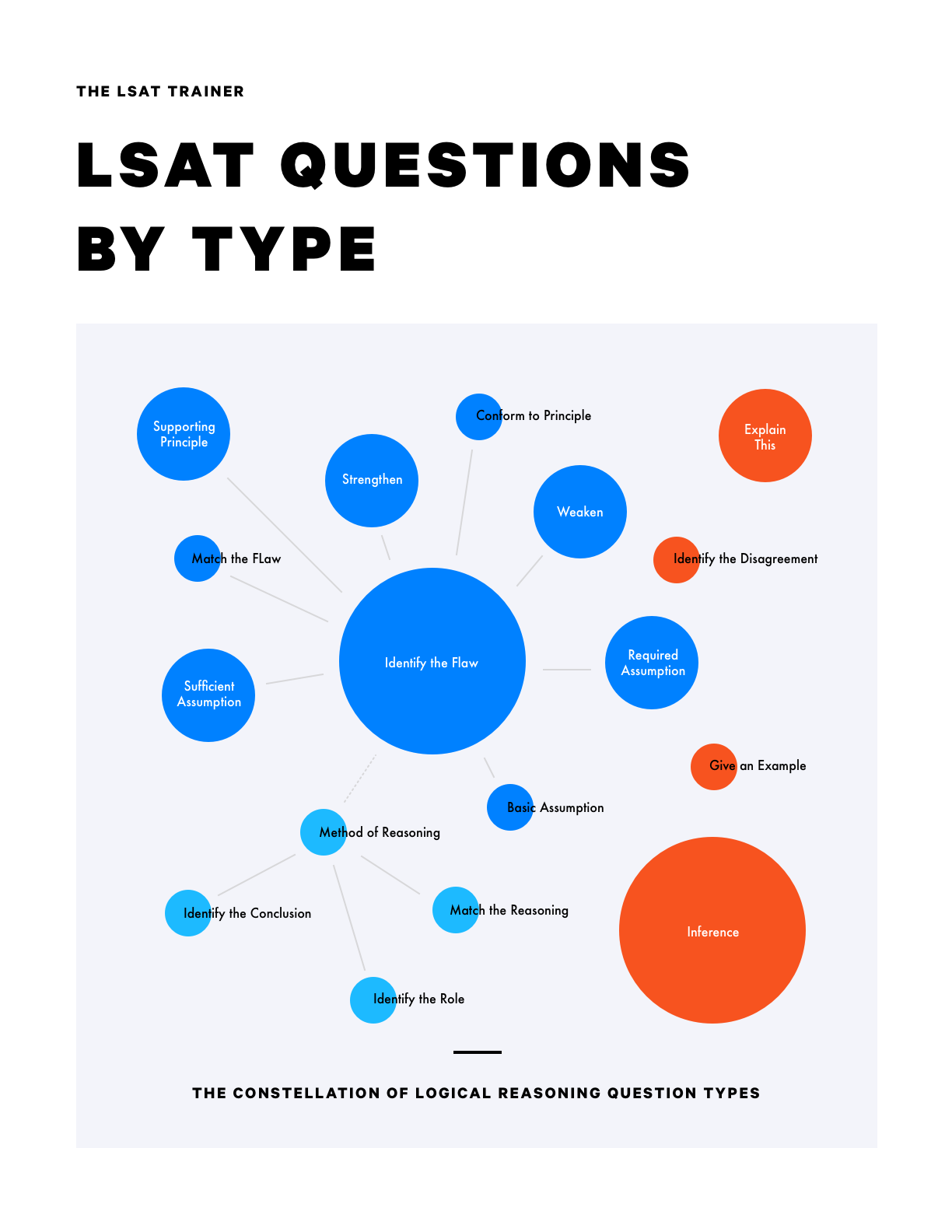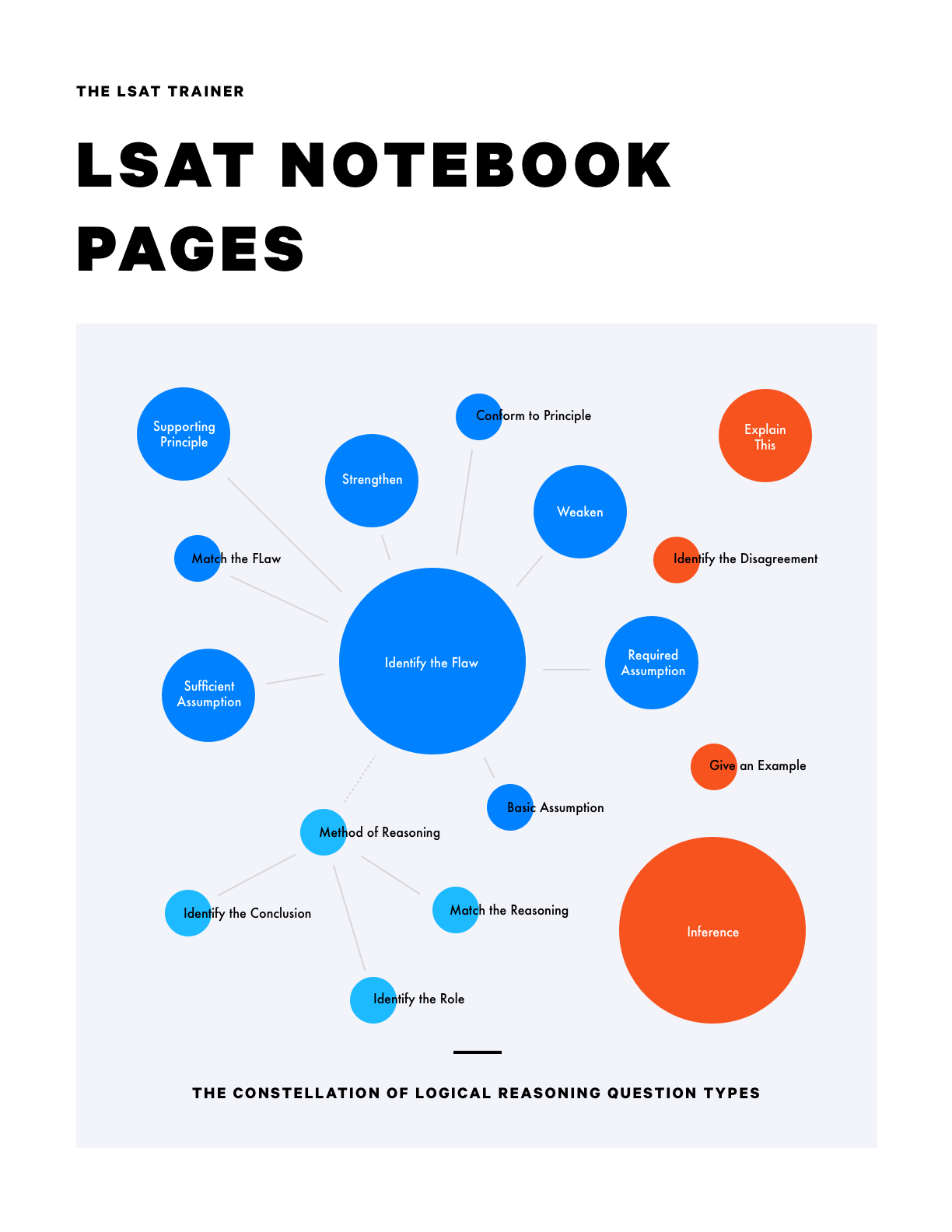Game 1
Step 1
Per the given scenario, we can write out the six elements to be placed - F, G, H, J, K, and L - and the six positions to be filled, in order.
Step 2
Per the third and fourth rules, we can create two separate frames, one in which we have J G L consecutively, and another in which we have J (one other element) L G consecutively.
Step 3
Per the first rule, we can notate on both frames that H comes after J. In the first frame, that means it must come after the entire J G L chain.
Step 4
Per the second rule, we can notate on both frames that K comes after G.
Step 5
We can notate that F is not directly restricted by any of the given rules.
Game 2 (Option 1)
Step 1
Per the given scenario, we can write out the four elements to be placed - G, H, J, and M, and the six positions to be filled, two each for groups R, S, and T.
Step 2
Per the first rule, we can notate the biconditional that G is assigned to S if and only if H is assigned to R, as well as the contrapositive.
Step 3
Per the second rule, we can notate that if J is assigned to T, M will be assigned to R, as well as the contrapositive.
Step 4
Per the third rule, we can notate that G and J cannot be grouped together.
Game 2 (Option 2)
Step 1
Per the given scenario, we can write out the four elements to be placed - G, H, J, and M, and the six positions to be filled, two each for groups R, S, and T.
Step 2
Per the first rule, we can create two frames, one in which G is assigned to S and H to R, and another in which G is not assigned to S and H is not assigned to R.
Step 3
Per the second rule, we can notate that if J is assigned to T, M will be assigned to R, as well as the contrapositive.
Step 4
Per the third rule, we can notate that G and J cannot be grouped together. We can infer from this that in frame 1 J can’t be in group S.
Game 3 (Option 1)
Step 1
Per the given scenario and the first rule, we can write out the four elements to be placed - M, O, S, and T - and we can lay out our six total assignments - three each in groups G and L. It’s helpful to notice that for each group only one of the four elements will not be chosen.
Step 2
Per the second rule, we can create two frames, one in which M and S are assigned to G, and another in which M and S are assigned to L. Note that assigning M and S to one group does not exclude the possibility of M and S also appearing together in the other group.
Step 3
Per the third rule, we can infer that T can never be the element not selected. If T were not selected, O would have to be, in order to get us up to the three varieties that we would need, and we would then violate this third rule. Thus we can simply notate this rule by placing T into every group. And, with T placed, we no longer have a need to represent this rule conditionally.
Step 4
Per the fourth rule, in the second frame, we can place M into G.
Game 3 (Option 2)
Step 1
Per the given scenario and the first rule, we can write out the four elements to be placed - M, O, S, and T - and we can lay out our six total assignments - three each in groups G and L. It’s helpful to notice that for each group only one of the four elements will not be chosen.
Step 2
Per the second rule, we can create three frames, one in which M and S are assigned to G (but not assigned together to L), and another in which M and S are assigned to L (but not assigned together to G), and a third in which M and S are assigned to both G and L.
Step 3
Per the third rule, we can infer that T can never be the element not selected. If T were not selected, O would have to be, in order to get us up to the three varieties that we would need, and we would then violate this third rule. Thus we can simply notate this rule by placing T into every group. And, with T placed, we no longer have a need to represent this rule conditionally.
Step 4
In the first frame, we have three elements - M, S, and O - left to fill two positions, and, per how we designed our frames, we know M and S can’t fill them together. So, the final two positions in frame 1 must be filled by O and either M or S.
Step 5
In the second frame, per the fourth rule, we need to place an M into group G. Since we can’t have M and S together in group G in this frame, the final position in group G must be filled by O.
Game 4 (Option 1)
Step 1
Per the given scenario, we can write out the elements to be placed - executives Q, R, S, T, and V, as well as the subsets to be placed - plants F, H, M, and we can lay out the positions to be filled, ordered first through third, and separated out by subset or element. For the executives, we can indicate that each site must get at least one executive.
Step 2
Per the first rule, we can notate that F must come before H.
Step 3
Per the second rule, we can notate that F will get exactly one assignment.
Step 4
Per the third rule, we can notate that Q must come before both R and T.
Step 5
Per the fourth rule, we can notate that V cannot come before S.
Step 6
We can notate that plant M is not directly restricted by any of the given rules.
Game 4 (Option 2)
Step 1
Per the given scenario, we can write out the elements to be placed - executives Q, R, S, T, and V, as well as the subsets to be placed - plants F, H, M, and we can lay out the positions to be filled, ordered first through third, and separated out by subset or element. For the executives, we can indicate that each site must get at least one executive.
Step 2
Per the first rule, we can create two frames, one in which F is the first plant visited, and the second in which F is the second plant visited. When F is the first plant visited, H or M could be second or third. When F is the second plant visited, H must be third and M first.
Step 3
Per the second rule, we can notate in both frames that F will have exactly one assignment.
Step 4
Per the third rule, we can notate that Q must come before both R and T.
Step 5
Per the fourth rule, we can notate that V cannot come before S.
Step 6
We can note a small inference, per the third and fourth rules, that either Q or S must occupy the first slot in the first frame, and that we must, per the same reason, have a Q or S in the first group in the second frame as well. (Additionally, we could also split the first frame into two, one with Q as the only executive assigned to F, and the other with S as the only executive assigned to F.)
Step 7
We can notate that plant M is not directly restricted by any of the given rules.



